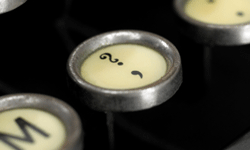Some say proper grammar is on its way out. Rapid-fire communications technologies, particularly short forms like texting and Twitter, seem to make the use of complete sentences, let alone correct punctuation, very 20th century.
Despite all acronymic evidence to the contrary, grammar matters -- because writing matters. As a way of communicating with others both within and well beyond one's personal sphere, writing is as good as it gets. It is, at its most basic, how we share our ideas, and in practice it's our most effective method of presenting ourselves to others.
Advertisement
In short, the ability to write effectively is indispensible, especially in this high-tech age of physical distance combined with intellectual intimacy. And writing effectively requires the proper use of words, structures and punctuation: There are those who, on finding an egregiously misplaced comma in the first sentence of a blog post, will assume the author isn't worth reading.
Commas, in fact, are some of the most often misused punctuation marks, and with good reason. The rules that guide when and when not to insert a comma can be a bit clouded in terminology and exceptions. So often, though, it comes down to one question: Is it essential?
In this article, we'll look at 10 common places in American English where people mistakenly insert a comma, find out why it doesn't go there, and learn how to make it right.
First up, a really easy one …


